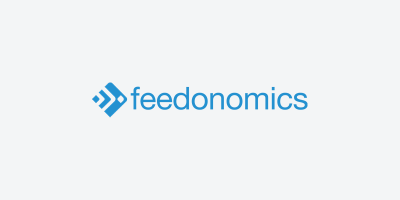We’re in the midst of the busiest shopping season of the year, and Boxing Day is quickly approaching. Among holiday shopping days, Boxing Day is unique in that it’s a perfect day for people to buy gifts for themselves. All the presents they wanted and didn’t receive from Santa Claus are things they can buy on Boxing Day, and often at a discount.
Although footfall to brick-and-mortar businesses has declined in recent years, online shopping trends remain strong. With the right strategies in place, ecommerce businesses can maximize their return on Boxing Day and other promotional periods throughout the year. We’ve gathered some great insights from our ecommerce experts at Feedonomics, and we hope that merchants can apply this knowledge to their holiday and year-round planning.
1. Your launch timing might need to be adjusted
Be intentional about when you start selling and promoting your holiday deals. Based on this year’s Black Friday insights from ecommerce experts, holiday promotions are offered earlier than ever and stick around longer. In addition, holiday spending is not just limited to the main event. In the US, spending on Black Friday and Cyber Monday this year was slightly down compared to the record-setting numbers of 2020, but overall spending in November was almost 12% higher. If you haven’t already, consider expanding the timeline for your holiday offers.
“Some merchants left the creation of new Google Promotions too late to go live; Google stopped reviewing promotions from the day before Black Friday. Ideally, all new promotions should be in place at least seven working days before the sales day.”
2. Shoppers need help choosing you
Shoppers are inundated with ads and promotions all the time, so it’s easy for them to tune out. Help shoppers with short attention spans by making sure your messaging is easy to digest.
“Grab the headlines. Your headline sales message needs to grab attention immediately, be easy to understand, and actionable.”
Well-optimised product listings on Google Shopping also attract more valuable customers. Make sure your titles include crucial product information, so they can be search-relevant and drive conversions. Once an ad sends shoppers to your website, your site-wide sales should be prominently on display.
Find out how Feedonomics streamlines product optimization and catalog listing for hundreds of channels
3. Plan for everything, and plan ahead
Don’t just plan for yourself, plan for the competition. Identify the types of adjustments you can make if your initial promotion strategy doesn’t work as intended. Make sure you aren’t caught off-guard during the busiest time of the year.
“What happens if your competition goes lower than you, or has a better sales message overall? Decide in advance where you could go, what sub-sales messaging could you go to, and when during the promotion period. For example, start at 30% off, add free delivery messaging after two days, add more products into the sale, or improve messaging to 40% off.”
4. Tech solutions help you manage your inventory and orders
Ideally, the holiday season means an uptick in orders for merchants. However, an increased volume of orders also means an increase in potential fulfillment issues and overselling. The last thing you want to do is upset your customers by allowing them to purchase products that you don’t have stocked anymore. On marketplaces like Amazon and eBay, too many seller-side cancellations can get your seller account suspended.
If you’re selling products on multiple marketplaces, managing your orders and inventory manually can get messy. A multichannel marketplace feed solution makes it easy to streamline your marketplace orders through a single ecommerce platform, like BigCommerce or Shopify. You can also set inventory thresholds to reserve stock for each marketplace channel.
“Inventory thresholds allow merchants to ensure they are not overselling. Merchants can provide us with a specific number to remove from their inventory or a percentage to create a buffer. This helps ensure they have stock for all their marketplace channels as well as their websites”
5. The whole year is important for your holiday success, and vice versa
If you want to see results on big shopping days, your ad campaigns and operations should be tested and honed throughout the year. Set up your catalog for some valuable A/B testing, and use custom labels in your product feeds to have more control over your campaigns.
To drive more footfall to your stores, learn to use local inventory ads and solidify your omnichannel operations so that your in-store teams are familiarized with popular options, like curbside pickup.
Merchants can learn from the holiday season and carry that knowledge into the new year. With so many supply chain issues affecting merchants lately, it helps to be prepared.
“After Black Friday and Boxing Day, it’s a good idea to review inventory trends to plan for purchasing needs for next year.”

With its leading data feed management platform, Feedonomics helps brands, retailers, and agencies optimize and list products on hundreds of shopping destinations around the world. Learn more about our full-service solutions for advertising channels and marketplaces.






